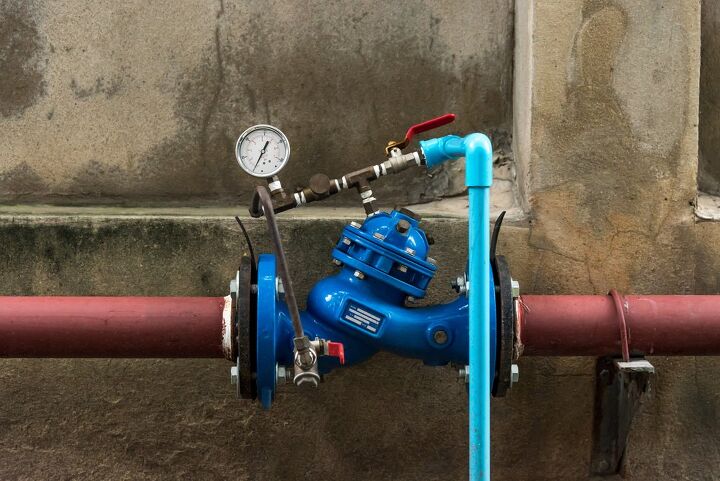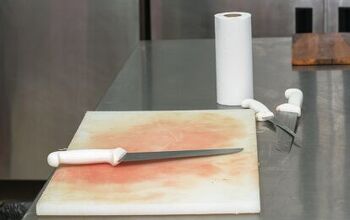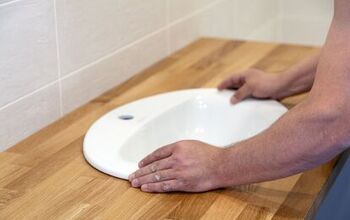How Much Does It Cost To Install A Pressure Regulator Valve?

A pressure-reducing valve (PRV) is an essential piece of your residential plumbing. It prevents a multitude of costly plumbing-related issues and should therefore be maintained and replaced as soon as a problem is observed. There are a few options you need to consider when you replace a PRV, but the first thing everyone wants to know is how much everything will cost.
If you decide to replace the valve on your own, you can expect to pay between $60 and $150 on average for the valve itself. You will also need specialized tools and skills. On the other hand, if you decide to hire a professional plumber to install the pressure-reducing valve, you will likely pay approximately $300-$400. This price includes the valve, extra parts, and labor.
There are a few factors that will affect the cost of a PRV installation. Considerations include the resident’s location, the ease of access to the relevant pipes, the quality of the parts and the expertise of the plumber. However, the cost of not fixing your PRV can be extravagant. If you consider that high water pressure can destroy appliances like your water heater or your dishwasher, it should be clear to you that maintaining this valve is a homeowner imperative.
Do You Need to Hire a Plumber?
Get free, zero-commitment quotes from pro contractors near you.

What Is a Pressure-Reducing Valve Anyway?
A pressure-reducing valve is a type of pressure regulating valve. Typically, it is lcated outside of a residence, on the water main, somewhere between the main shut off valve and the residence itself.
A PRV does exactly what you think it does. A simple mechanical valve, the PRV reduces the pressure of incoming water for downstream use. Generally, residential water should be around 80 psi. Unfortunately, most municipal water is pumped in at a higher pressure. The PRV reduces the municipal water pressure to meet residential standards. Most modern homes come with a preinstalled PRV.
Do I Really Need A PRV?
PRV’s may be installed for a few reasons. First, depending on the relevant codes in your area, you may NEED to have a pressure reducing valve installed. If the water pressure coming into your house exceeds code standards, a PRV may be installed to meet the standard.
However, regardless of relevant codes, you may still wish to install a pressure reducing valve because high pressure water can wreak havoc on the plumbing in your home. Residential plumbing is generally built to withstand water pressure of 80 psi, so if the water coming into your house has a greater pressure than 80 psi, it will need to be reduced. Many pipes burst because of pressure issues.
Finally, on average, you can save $75 a year or more on your water bill by installing a PRV. The valve reduces pressure by reducing the amount of water entering your house. Less water coming in means less water consumed. Less water consumed means lower water bills.
How Long Do Pressure-Reducing Valves Last, And How Do I Know If I Need a Replacement?
Generally, a pressure reducing valve will last around 11 years, but of course, as with any other mechanical parts, your mileage will vary. For example, differences in the mineral content of incoming water can have drastic effects on the lifetime of the PRV.
Your plumbing may experience some telling symptoms if there is a problem with your PRV. Some of these problems can be eliminated by simply cleaning the valve, other problems can only be solved by replacing the part.
Mineral Clogs
If, for example, the incoming water has a high mineral content, your PRV might become blocked. This can cause lower water pressure in your home. Luckily, if you are dealing with a simple clog, the problem can frequently be solved by merely disassembling and cleaning the valve. You would generally hire a professional to do this, but a DIYer with the right tools and information could potentially handle the work.
Mechanical Failure
Also consider that since the PRV is mechanical, with moving parts, it is inevitable that friction, movement, and wear will eventually cause something to break. Sometimes the broken part itself can be fixed, but usually it is more cost-effective and less time-consuming to just replace the entire valve.
Finally, if you are having plumbing problems with your water heater or other appliances connected to the plumbing, or if your pipes bang, thump, or leak, you may have a pressure problem and should take a look at your PRV.
It is worth noting that even if you are having a pressure issue because of a pressure reducing valve, it does not necessarily mean that there is a problem with the valve. Often the problem is simply that the valve has been set or reset to the wrong pressure. This should be the first consideration when troubleshooting.
Should I Replace Myself or Hire a Professional?
A PRV can be replaced by the homeowner or a professional, but if you decide to do it yourself, understand that the job is quite involved. You will need multiple tools and parts that are uniquely suited to plumbing, such as a torch, pipe cutter, soldering kit, solder, flux, and a plumber’s wrench. If you do not have these tools already, or if you don’t already have copper piping, adaptors, etc., you will need to factor these things into your costs.
Also, it is worth considering that this is at least intermediate level plumbing work so it may not be the best project to start if you have no experience. Since the PRV is connected right after the water main valve, all the water entering your house will have to pass through it. Therefore, if the pressure reducing valve is not connected properly, there are a multitude of problems that you may encounter.
For the above reasons, it is often best practice to allow a professional to do the installation. Assuming you hire a reputable plumber, you can expect that a professionally installed pressure reducing valve will last for over a decade with minimal problems.
Breaking Down the Costs to Install a Pressure-Reducing Valve
Depending on whether you hire a professional, and depending on where you live, there are different costs associated with replacing a PRV.
DIY Installation Costs
As mentioned above, if you are installing the valve yourself, you will need to take other costs into account. For example, a plumbing torch can average $30. Add a $20 soldering kit, and a $10 plumbing wrench onto the bill and things can start to get pricey. This is especially the case if you consider the loss of your time. You can expect the job to take over 3 hours, depending on your skill level.
However, if you have accounted for the above, the PRV itself will cost you anywhere from $60 to $150, depending on quality and features. Pressure reducing valves are made mostly from brass, but you want to be aware of lead content and general construction considerations. You will need to know the size of the pipe you are connecting to, and you will need to talk to a reputable dealer to determine the actual size of the valve you need, based on the water pressure coming in and the desired pressure out.
Professional Installation Costs
Finally, if you decide to hire a professional plumber, you will still have to pay for the valve and the other relevant parts. The plumber will supply the parts, but you do not necessarily need to use the parts he offers initially. Consider demanding a less expensive part if you are trying to avoid extra costs. The biggest price tag will be the labor, however.
Depending on your location, costs will vary. In general, assuming favorable conditions, you can expect a plumber to do the job in 3 hours and charge approximately $300-$400. Plumbing labor costs alone can range between $50 to $200. Add the cost of the PRV and any additional parts and this price seems reasonable.
As mentioned, the above costs assume favorable conditions. If the location of the water main is hard to access, for example, you will likely be charged more for the extra labor. Expedited service or service in a storm will also likely increase the cost.
Do You Need to Hire a Plumber?
Get free, zero-commitment quotes from pro contractors near you.

Replace The Valve Now or The Appliances Later
In the end, the cost of replacing a pressure reducing valve is dependent on a few factors. After you have determined that the valve needs to be replaced, you must decide on your method: DIY or professional. There are different costs associated with each choice, and each homeowner must decide for themselves which option is best for them and go from there.
What is certain is that failing to replace your PRV will result in a plethora of other plumbing problems. An inexpensive water heater or dishwasher can cost $500, not including installation costs. Since a broken or malfunctioning pressure reducing valve can destroy residential plumbing and appliances, $350 to fix one valve starts to seem like a bargain.

We are a team of passionate homeowners, home improvement pros, and DIY enthusiasts who enjoy sharing home improvement, housekeeping, decorating, and more with other homeowners! Whether you're looking for a step-by-step guide on fixing an appliance or the cost of installing a fence, we've here to help.
More by Upgraded Home Team



























